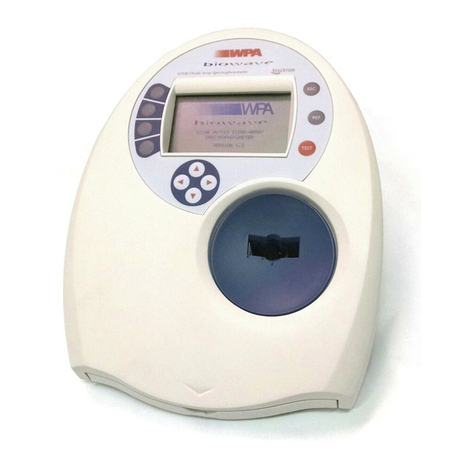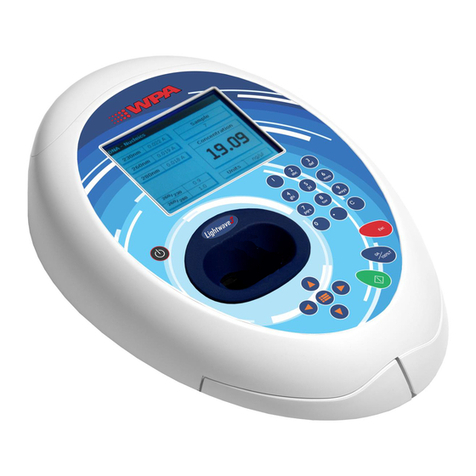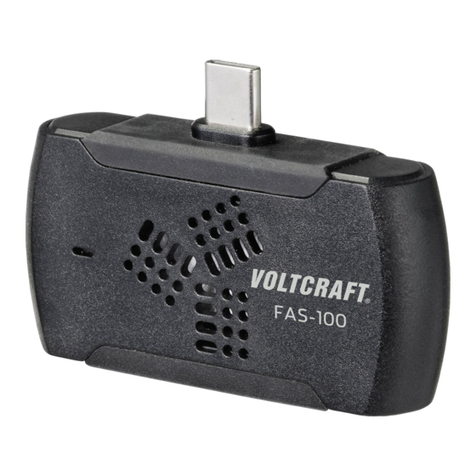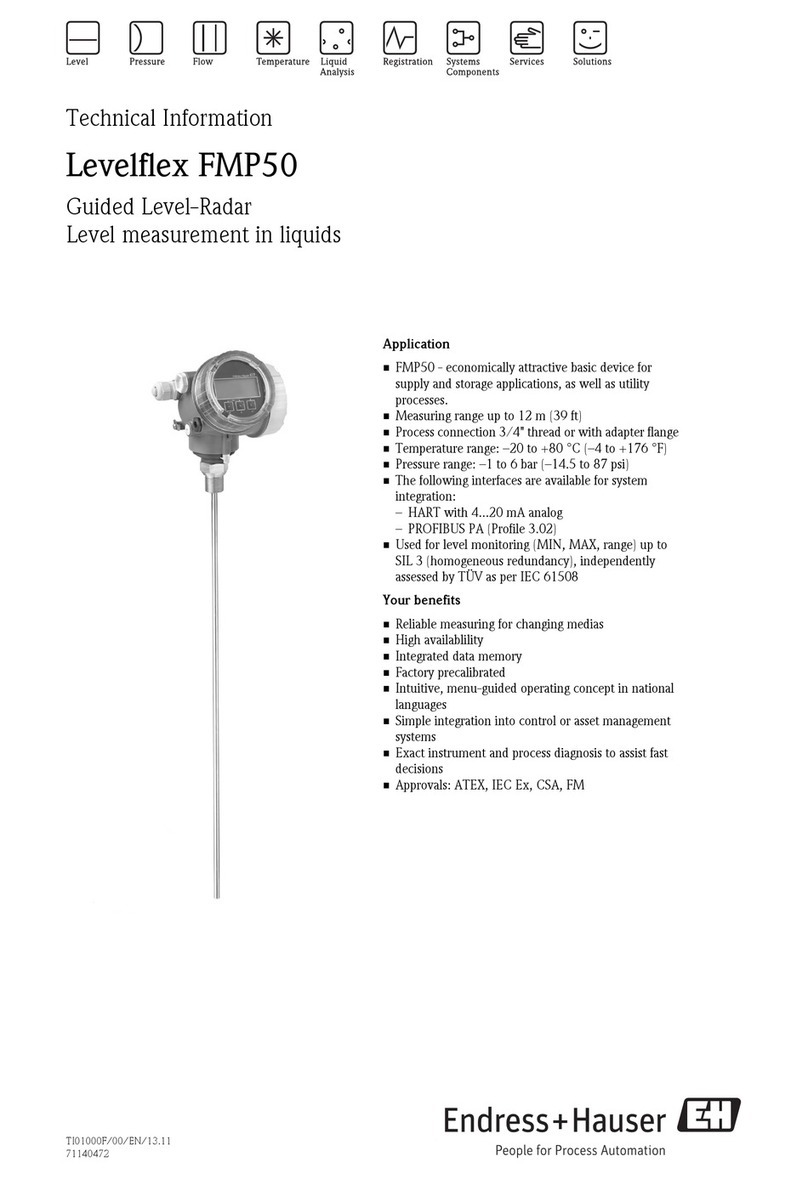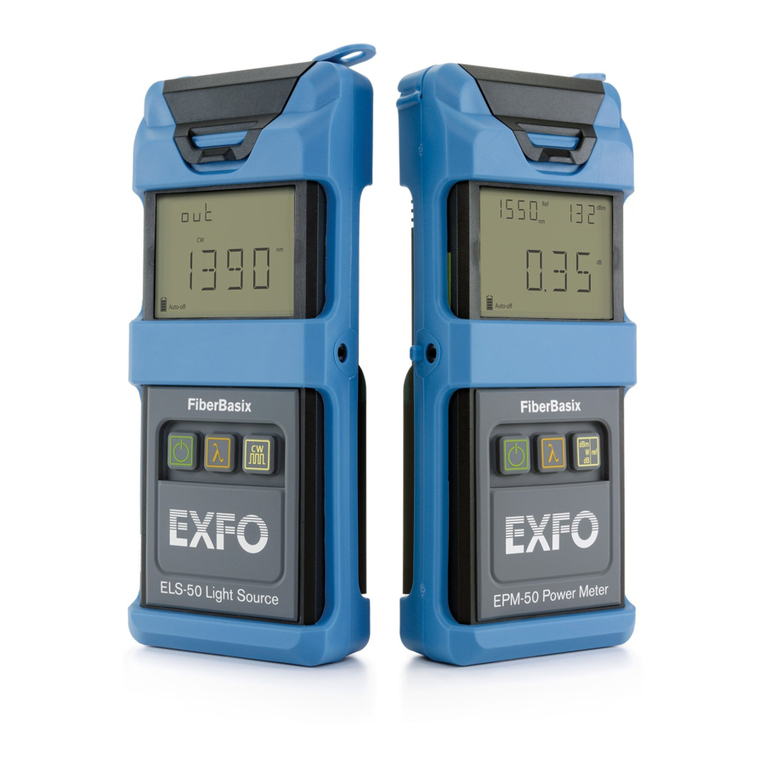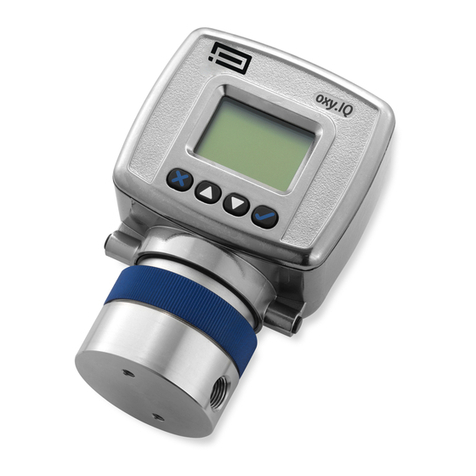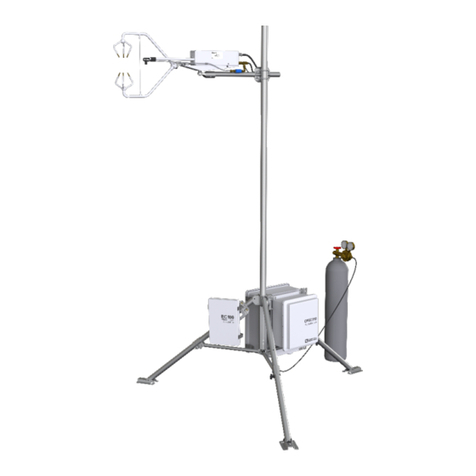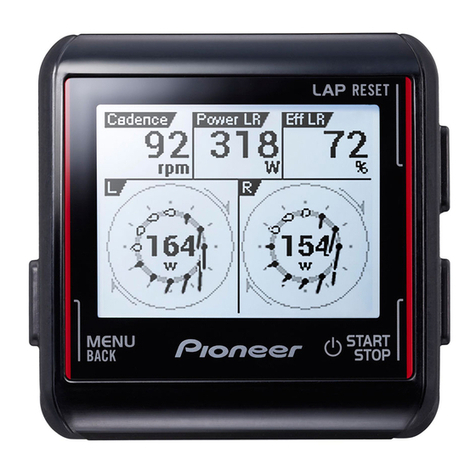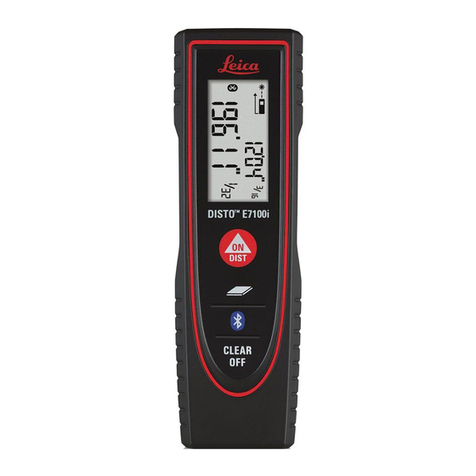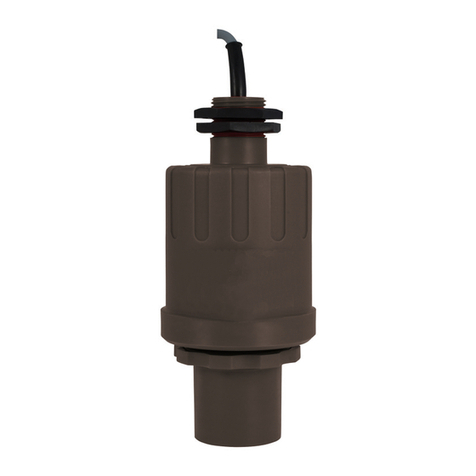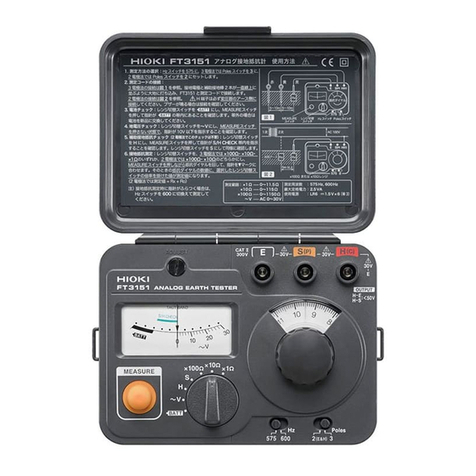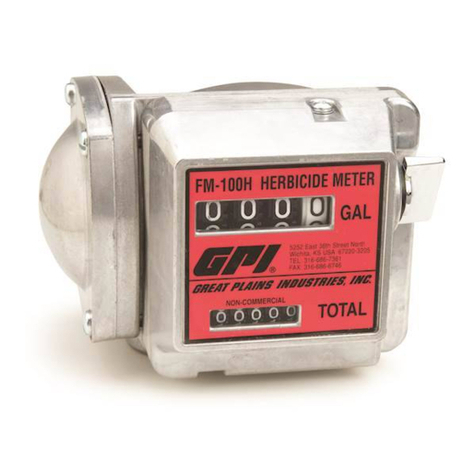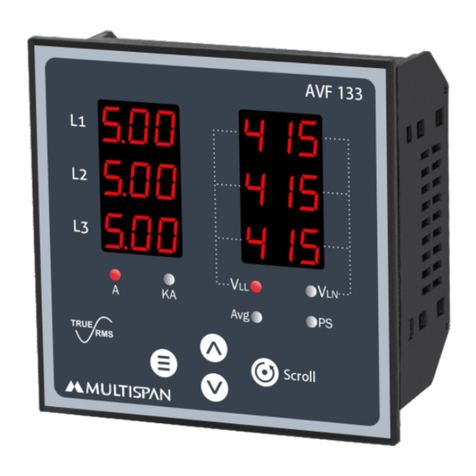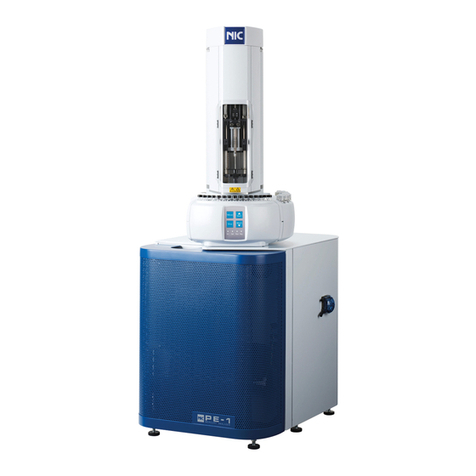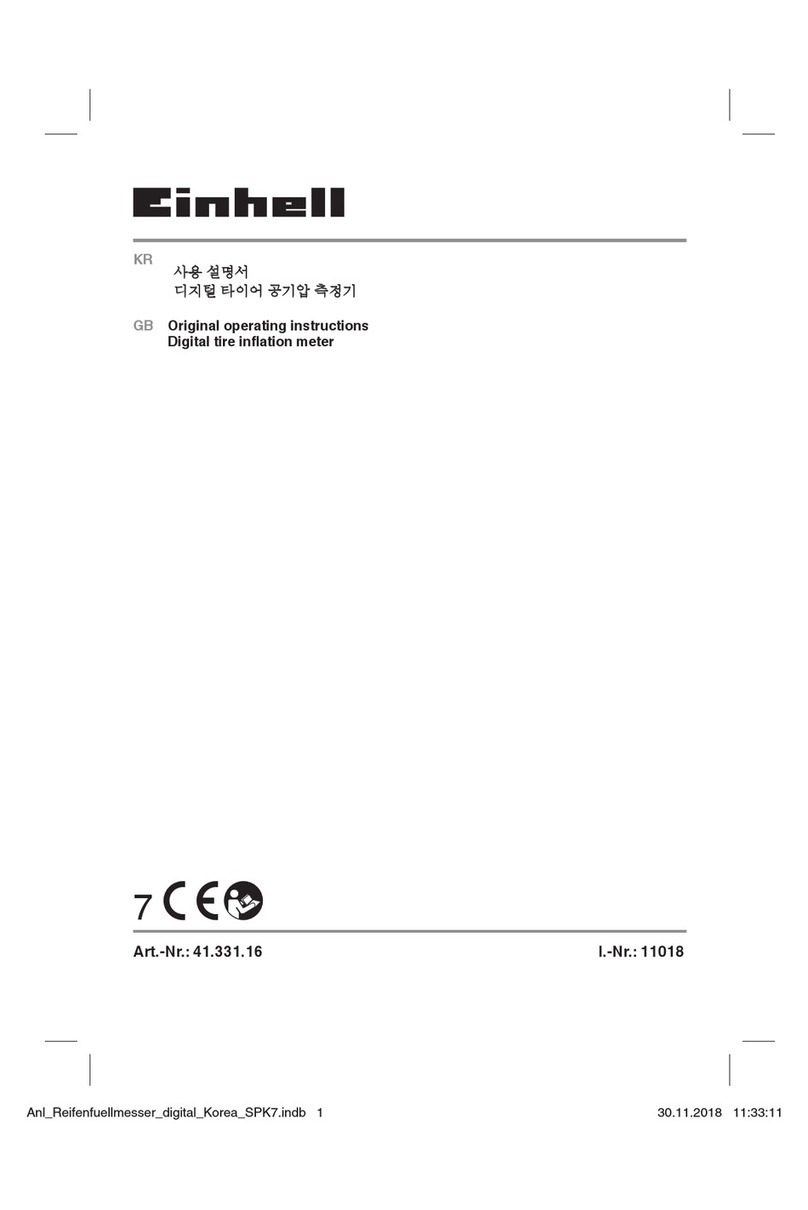WPA CO 8000 User manual

WPA CO 8000 Cell Density Meter
User Manual

Declaration of Conformity
This is to certify that the WPA CO 8000 Biowave Cell Density Meter
Part number 80-3000-45
manufactured by Biochrom Ltd. conform to the requirements of the following
Directives-: 73/23/EEC & 89/336/EEC
Standards to which conformity is declared
EN 61 010-1: 2001
Safety requirements for electrical equipment for measurement, control and
laboratory use.
EN 61326: 1998
Electrical equipment for measurement, control and laboratory use – EMC
requirements
Signed: Dated: 23nd February 2003
David Parr
Managing Director
Biochrom Ltd
Postal address Telephone Telefax
Biochrom Ltd +44 1223 423723 +44 1223 420164
22 Cambridge Science Park
Milton Road e mail: enquiries@biochrom.co.uk website: http://www.biochrom.co.uk
Cambridge CB4 0FJ
England
Registered in England No: 3526954
Registered Office: 22 Cambridge Science Park, Milton Road, Cambridge CB4 0FJ, England.
Biochrom Ltd
Certificate No. 890333

CONTENTS
Unpacking, Positioning and Installation 1
OPERATION 2
Introduction 2
Using the Instrument 3
Making a measurement 4
Using the memory function 4
TROUBLE SHOOTING NOTES 5
ACCESSORIES 6
OUTPUT OF RESULTS 6
Use with serial printer 6
Use with PC 6
CLEANING AND GENERAL CARE OF THE INSTRUMENT 7
De-contamination procedure 7
SPECIFICATION AND WARRANTY 8


___________________________________________________________________
Issue 03 - 06/2004 WPA CO 8000, English 1
Unpacking, Positioning and Installation
•Ensure your proposed installation site conforms to the environmental conditions
for safe operation:
Indoor use only
Temperature 5°C to 35°C
Maximum relative humidity of 80 % up to 31°C decreasing linearly to 50 %
at 40°C
If this equipment is used in a manner not specified or in environmental conditions
not appropriate for safe operation, the protection provided by the equipment may be
impaired and instrument warranty withdrawn.
•The instrument is powered by the internal rechargeable battery or by mains
electricity using the supplied power-adapter. Using the instrument with the
mains adapter will automatically recharge the battery.
•The battery will last approx. 1 month when fully charged with normal use.
•A full battery recharge will take approx. 12 hours (overnight).

___________________________________________________________________
2 WPA CO 8000, English Issue 03– 06/2004
OPERATION
Introduction
Your cell density meter is a small easy to use instrument that is dedicated to
measuring the density of cells in suspension at 600nm. It is suitable for measuring
growth rates of all types of cell including E.coli and yeast and has been designed to
give comparable readings to other spectrophotometers. To use with other cell types,
known concentrations / cell counts (with replicates to gauge error limits) should be
plotted against measured OD600 to construct a calibration curve. Clumping together
of cells will also affect readings, so the medium they are suspended in will also make
a difference. The instrument can be used in incubation cabinets and under anaerobic
conditions.
The stage of growth of a bacterial culture needs to be monitored to ensure that the
cells are harvested at the optimum point for the greatest density of live cells. The
growth curve is given below.
Cells should be harvested towards the end of the log phase. The optical density of
the sample indicates when this point has been reached. This value varies dependent
on the cells being grown.
As bacterial samples are cloudy, they mainly scatter light rather than absorb it. This
means that the actual reading obtained is very dependent on the collecting area of the
detector after the sample and the optical geometry of the system. These vary
depending on the make and model of instrument, so differences in readings between
types of instruments are to be expected.
This instrument is dedicated to measuring at 600nm and has been designed to ensure
that results obtained are comparable with most other spectrophotometers. Readings
taken at 595nm will differ only slightly and such differences are normally
insignificant.
A 600nm LED source in combination with a fibre optic is used to obtain the
measurement. The instrument can be linked via a serial lead to either a serial printer
for hardcopy output or to a PC for download of results to spreadsheet.
Measuring Cell Density
Log Phase
time
No.
cells Stationary
Decline
Lag

___________________________________________________________________
Issue 03 - 06/2004 WPA CO 8000, English 3
Using the Instrument
Keypad
on/off On / off button
R to set reference to 0.000 OD at 600nm on a reference
T to make a measurement
mem Memory button
reset Press twice to clear stored values
recall / print Print results stored in memory
Display There is a memory number indicator and a battery indicator
Note that the light beam shines from front to back through the cell chamber; ensure
the cell is inserted in the correct alignment.
The following table indicates the absolute minimum volume necessary for the correct
function of the unit. The use of disposable plastic cuvettes is recommended.
Cuvette/Tube Min Volume
(ml) Part number Minimum Depth (approx) from
base of cuvette to meniscus (mm)
Macro Cuvette
(max fill volume 4.5ml) 1.0ml 80-3000-60 14mm
Semi-micro
(max fill volume 1.4ml) 0.5ml 80-3000-76 13mm
10mm diameter tube 0.9ml - 16mm
12mm diameter tube 1.1ml - 15mm
16mm diameter tube 2.2ml - 15mm

___________________________________________________________________
4 WPA CO 8000, English Issue 03– 06/2004
Making a measurement
1. Switch the instrument on by pressing the ON/OFF button.
2. Place a reference sample into the cuvette sample compartment.
3. Press and release the R(reference) button. The display will show 0.00.
4. Remove the reference sample and replace with the sample solution in a cuvette
or tube.
5. Press and release the T(test) button. The display will show the OD of the
sample in absorbance units.
Multiple samples can be compared with the same reference by placing different
samples in the cuvette chamber and making measurements for each one. It is
recommended to re-reference with the reference solution every 10 to 15 minutes to
avoid any slow instrument drift. If in doubt always re-reference.
Using the memory function
The instrument can store up to 99 readings in the memory. The results can then be
viewed, printed or downloaded at a later time. This enables readings to be taken at,
for example, an incubator and downloaded to a PC in a different laboratory. The
results remain in the memory even when the instrument is switched off.
1. Switch the instrument on by pressing the ON/OFF button.
2. Press MEM button to display MEM (if not already displayed)
3. Place a reference sample into the cuvette sample compartment.
4. Press the R(reference) button. The display will show 0.00 but the memory
number will not change.
5. Insert the sample and press the T(test) button. The result will be displayed and
the Memory Number will increase by one.
6. To retrieve the results press recall/print. This will print out all of the results
held in the memory if the instrument is connected to a PC or printer and cause
the memory number to flash. Repeated pressing of the button will display the
results in the memory on the screen in reverse order scrolling back to the
beginning.
7. Press reset or MEM to go back to the latest result.
8. Pressing reset when the latest result in the memory is showing will cause the
screen to flash rSt and ?.
If no further action is taken the screen will revert to its normal state after 7 seconds.
If reset is pressed again whilst the screen is flashing all of the memory positions will
be cleared.

___________________________________________________________________
Issue 03 - 06/2004 WPA CO 8000, English 5
TROUBLE SHOOTING NOTES
ERROR INDICATION
SOLUTION
A flashing Absorbance reading of
2.00 Abs is obtained. This indicates an Absorbance of more than 1.99 and is
therefore out of range. The sample needs to be diluted.
A negative reading is obtained. In normal measurements the test sample has a positive
Absorbance compared to that of the Reference.
Negative readings will be obtained if the Reference and
Test cuvettes are mixed up.
A flashing Absorbance reading of –
0.30 Abs is obtained. This indicates an Absorbance of less than –0.30 Abs
and is therefore out of range. The sample needs to be
diluted.
Unexpected results are obtained. Any bubbles in solution will produce considerable
error.
Check LED is flashing
REF is displayed when T is pressed The baseline has not been set. Replace the sample with
a blank or reference sample and press T. The samples
can then be tested.
No reading is obtained when using
the instrument in battery mode. Check that there is sufficient battery power available.
The battery power available is indicted by the battery
symbol at the bottom right hand corner of the display.
Three bars in the battery indicates that it is fully
charged. If only one or no bars are present the battery
needs to be recharged.
Connect the instrument to the electric power supply
using the adaptor/recharge unit. The battery will be
fully recharged in 12 hours
The OD600 value is different to
that obtained on another
instrument in the lab
When you measure turbid solutions you do not measure
the absorbance/transmittance of light at the detector,
you measure the amount of scattered light that reaches
the detector. Thus optical geometry is very important -
the further the distance from the sample to the detector,
the greater the effect of the scattered light. Thus
instead of harvesting at 0.4 OD, for example, you have
do it at 0.8 OD. A simple conversion factor can be
calculated from the OD600 of your existing instrument
compared to that of the cell density meter
IMPORTANT WARNING
Always wear protective clothing when handling bacteria or other cells.

___________________________________________________________________
6 WPA CO 8000, English Issue 03– 06/2004
ACCESSORIES
S2000P serial printer (includes serial cable) 80-3000-94
Spreadsheet interface software 80-2112-23
Serial interface cable 80-3001-00
Pack of 100 disposable cells, 1ml minimum volume 80-3000-60
Pack of 100 disposable cells, 0.5ml minimum volume 80-3000-76
Adapter set for 10 and 12mm tubes 80-3000-57
OUTPUT OF RESULTS
Use with serial printer
The instrument is designed to print to a serial printer at 9600 Baud with the S2000P
serial printer and cable. Output is automatic when recall/print is pressed and the
printer is connected and switched on.
Use with PC
Results can be downloaded directly to Excel when the PC has the Spreadsheet
Interface Software installed (80-2112-23) and the two are linked with the serial cable
(80-3001-00); detailed instructions are supplied with the software. Baud rate is 9600
and the separator should be set to space.

___________________________________________________________________
Issue 03 - 06/2004 WPA CO 8000, English 7
CLEANING AND GENERAL CARE OF THE INSTRUMENT
The instrument has no serviceable parts.
The instrument requires little maintenance, but the following are considered good
practice:
1Keep the instrument clean and dry. Wipe off any spilt liquids immediately.
Clean with a slightly damp cloth; a non-abrasive water-based soap or
detergent may be used. The instrument may be wiped
2Remove the cuvettes from the instrument when not in use.
3Store in a cool place away from corrosive chemicals or fumes.
De-contamination procedure
To decontaminate we recommend that the instrument is wiped with ethanol or other
antibacterial detergent as required. A soaked cloth may be inserted into the cuvette
chamber or ethanol sprayed directly into the compartment.
The instrument can be sterilised using formaldehyde or ethylene oxide, but not with
UV light (due to plastic degradation).
For severe contamination it is possible to remove the 4 screws in the base and
separate the top and bottom covers (taking care to not drop the battery inside the
instrument). The contaminated areas in the instrument may then be wiped with a
suitable anti-bacterial detergent.

___________________________________________________________________
8 WPA CO 8000, English Issue 03– 06/2004
SPECIFICATION AND WARRANTY
Wavelength 600nm
Bandwidth 40nm
Range Optical Density –0.3A to 1.99A
Accuracy <±0.05A at 1A using Neutral Density Filters
Repeatability ±0.02A at 1A
Cuvette holder Fixed with drain hole. Accepts 10mm pathlength
semi micro and macro cuvettes or 14-17mm round
tubes.
Output RS232
Memory 99 readings
Display Custom LCD
Power requirements External power adaptor (110 to 220V, 50/60Hz,
20VA) or internal rechargeable NiMH battery
Approximate dimensions 180 x 150 x 60mm
Weight 0.6kg
Specifications are measured after the instrument has warmed up at a constant
ambient temperature and are typical of a production unit. As part of our policy of
continuous development, we reserve the right to alter specifications without notice.
The product does not fulfil the specific requirements of the IVD.
Warranty
Your supplier guarantees that the product supplied has been thoroughly tested to
ensure that it meets its published specification. The warranty included in the
conditions of supply is valid for 12 months only if the product has been used
according to the instructions supplied. They can accept no liability for loss or
damage, however caused, arising from the faulty or incorrect use of this product.
This product has been designed and manufactured by Biochrom Ltd, 22 Cambridge
Science Park, Milton Road, Cambridge CB4 0FJ, UK.
Table of contents
Other WPA Measuring Instrument manuals
